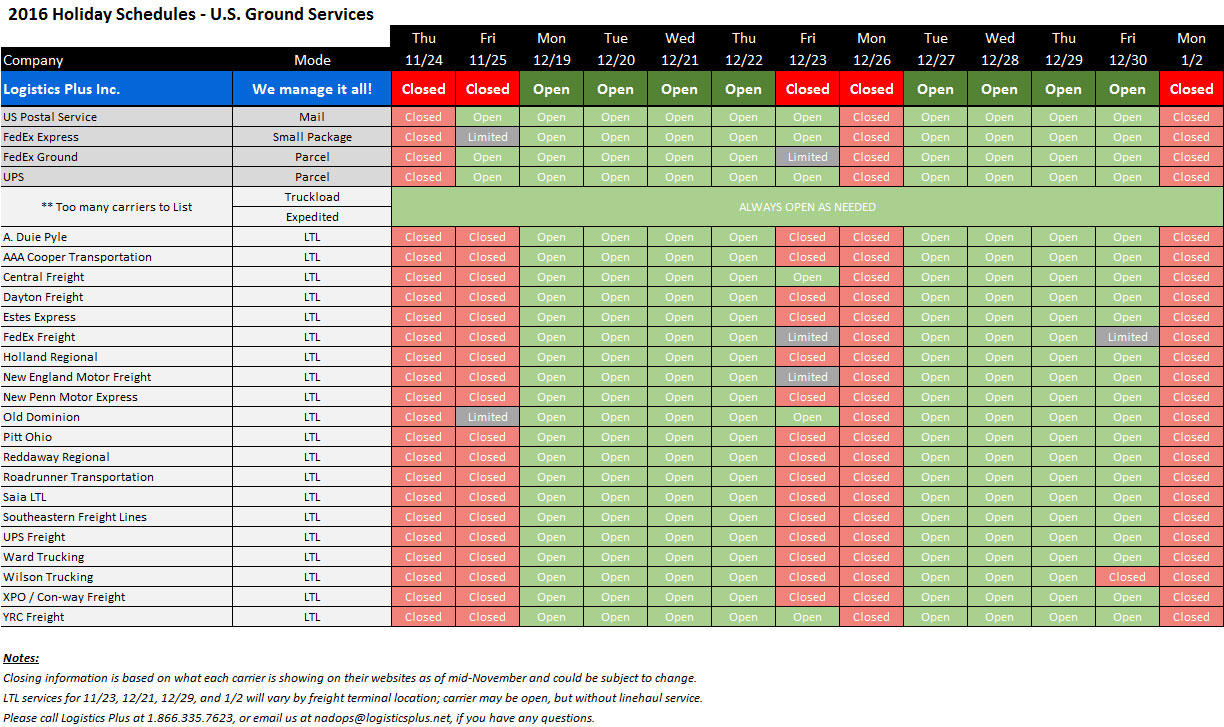
by logisticsplus | Nov 17, 2016 | News
U.S. Holiday schedules for Logistics Plus and ground carriers
As the holidays approach, we want to help you avoid any unnecessary shipping delays over the next few weeks. Shown below is the holiday schedule for U.S.-based Logistics Plus offices and warehouse locations, as well as the top U.S. ground (parcel and LTL) carriers. If you have any special transportation needs, or expedited shipping requests, please contact Logistics Plus in advance of the office closings noted below. You can use the Logistics Plus online global directory to find any of our people or our locations. You can also reach our North American freight division by calling 1.866.335.7623 or emailing us at nadops@logisticsplus.com.

Click image to see a slightly larger version of table.

by logisticsplus | Nov 16, 2016 | News
Wondering whether your domestic freight shipment should move via parcel, less-than-truckload (LTL), or full-truckload (FTL) carrier? Here’s a quick cheat-sheet with some PROs and CONs to each of these ground transportation modes.
 Parcel Shipping: Shipments under 150 pounds and shipped in cartons (less than 108 inches long and 67 inches wide), rather than on a pallet, are often moved via Parcel shipping with carriers such as USPS, UPS, FedEx or regional courier services.
Parcel Shipping: Shipments under 150 pounds and shipped in cartons (less than 108 inches long and 67 inches wide), rather than on a pallet, are often moved via Parcel shipping with carriers such as USPS, UPS, FedEx or regional courier services.
- PROS: Fast service, many delivery options, readily available, lower shipping costs on smaller shipments.
- CONS: More chance of being lost or damaged, lower carrier liability limits per pound, few carrier options.
 Standard Less-Than-Truckload (LTL) Shipping: Shipments between 150 and 5,000 pounds are generally better moved using standard LTL carrier pricing with LTL carriers such as FedEx Freight, UPS Freight, YRC Freight, or regional freight carriers.
Standard Less-Than-Truckload (LTL) Shipping: Shipments between 150 and 5,000 pounds are generally better moved using standard LTL carrier pricing with LTL carriers such as FedEx Freight, UPS Freight, YRC Freight, or regional freight carriers.
- PROS: Relatively fast service, good availability, fewer damages, good with B2B deliveries, higher carrier liability limits pound.
- CONS: Complex pricing structure, higher shipping costs, not always suitable for non-palletized freight, not always great with B2C deliveries, minimal carrier options.
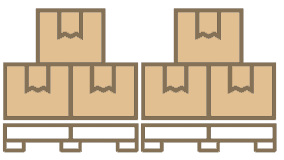 Volume Less-Than-Truckload (LTL) Shipping: Shipments between 5,000 and 10,000 pounds, or taking up more than 6 pallet spaces, are often moved more cost-effectively with a “volume” or “spot” quote. In these situations, the carrier will analyze the weight and dimensions of the shipment and provide a competitive “all-in” rate quote.
Volume Less-Than-Truckload (LTL) Shipping: Shipments between 5,000 and 10,000 pounds, or taking up more than 6 pallet spaces, are often moved more cost-effectively with a “volume” or “spot” quote. In these situations, the carrier will analyze the weight and dimensions of the shipment and provide a competitive “all-in” rate quote.
- PROS: All of the above, plus this approach will generally produce a lower price than standard LTL shipping rates.
- CONS: Often predicated on when or where LTL carrier has equipment available and need for more freight volume, getting quotes takes more time.
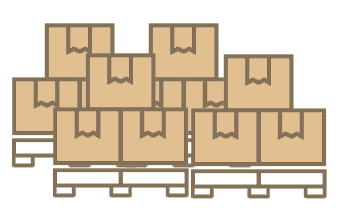 Partial Truckload Shipping: Shipments between 10,000 and 20,000 pounds, or taking up more than 10 pallet spaces, are often moved more cost-effectively as a partial truckload. In these situations, the truckload carrier will analyze the weight and dimensions of the shipment and provide a competitive “all-in” rate quote.
Partial Truckload Shipping: Shipments between 10,000 and 20,000 pounds, or taking up more than 10 pallet spaces, are often moved more cost-effectively as a partial truckload. In these situations, the truckload carrier will analyze the weight and dimensions of the shipment and provide a competitive “all-in” rate quote.
- PROS: Generally produces a lower pricing than standard or volume LTL shipping rates, since shipment only takes up part of the trailer, carrier can sell remaining capacity to another customer to share the costs, many more carrier options.
- CONS: Finding right carrier with capacity is often difficult, predicated on when or where carrier has equipment available, getting quotes takes more time, must vet carrier to ensure safe and reliable.
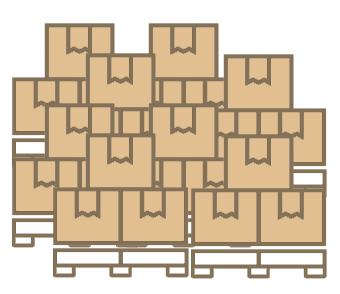 Full Truckload (FTL) Shipping: Shipments over 20,000 pounds are often moved more cost-effectively as a full truckload. In these situations, the carrier will analyze the weight and dimensions of the shipment and provide a competitive “all-in” rate quote.
Full Truckload (FTL) Shipping: Shipments over 20,000 pounds are often moved more cost-effectively as a full truckload. In these situations, the carrier will analyze the weight and dimensions of the shipment and provide a competitive “all-in” rate quote.
- PROS: Generally the most cost-effective way to ship per pound, less susceptible to damages because freight is normally moved door-to-door on one trailer (no re-handlings), many more carrier options.
- CONS: Finding right carrier with capacity is often difficult, predicated on when or where carrier has equipment available, getting quotes take more time, must vet carrier to ensure safe and reliable.
Need help deciding how best to ship your freight the most using the most cost-effective ground transportation mode? Let Logistics Plus help you with a risk-free freight analysis or freight quote.


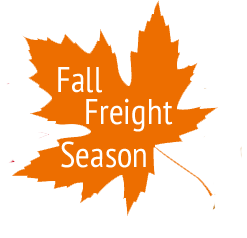
by logisticsplus | Oct 18, 2016 | News
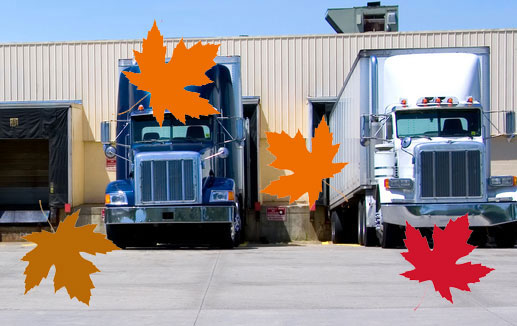 The leaves are turning, temperatures are dropping, and the peak Fall freight shipping season is here once again. Manufacturers are working to ship year-end orders, distributors are managing inventory and fulfilling shipments, and retailers are stocking shelves for the holidays. No matter where your business lies within the supply chain, finding affordable and reliable freight capacity this time of year is critical. To help get you through the season, here are 8 cost-saving freight shipping tips for you to consider:
The leaves are turning, temperatures are dropping, and the peak Fall freight shipping season is here once again. Manufacturers are working to ship year-end orders, distributors are managing inventory and fulfilling shipments, and retailers are stocking shelves for the holidays. No matter where your business lies within the supply chain, finding affordable and reliable freight capacity this time of year is critical. To help get you through the season, here are 8 cost-saving freight shipping tips for you to consider:
- Avoid surprises by knowing as much about your shipment as your carrier does. Carriers use dimensioning machines and forklift scales that measure and weigh every pallet. If your documentation doesn’t match their calculations, you’re charged an administrative fee to make the correction – plus your freight charges may be adjusted higher if it is heavier or takes up more space than expected. So know your proper freight classifications, and be sure to note specific National Motor Freight Classification (NMFC) codes on your bill of lading.
- Focus on the net cost. Discounts can be misleading. When shippers get a big discount from a carrier, they often think it’s a great deal; but there are so many other factors to consider, including the fact that “list price” base rates vary from carrier to carrier and from lane to lane. So an 80% discount off one carrier’s base rates may actually be more expensive than, say, a 75% discount from another base rate schedule. That’s why it is important to focus on only the total net cost, and not the discount (as we do here at Logistics Plus).
- Know when to consolidate. When shipping LTL freight shipments (those weighing between 150 and 10,000 pounds), consider consolidating orders to create a full truckload. LTL rates are usually much higher than truckload rates. Additionally, you should monitor your shipping patterns. If you find you are shipping multiple LTL shipments to the same customer within a close date range, consider consolidating those smaller loads into larger ones to reduce your overall expense.
- Understand the value of your product and carrier liability limits. Every booked freight shipment comes with limited liability coverage. The amount of coverage is determined by the carrier and based upon the commodity type. It covers a certain dollar amount per pound of freight. In some situations, the included liability coverage may be less than the value of the shipped goods. If so, this is where additional freight insurance may be purchased. The extra freight insurance covers the shipped items and the cost of freight shipping. It is redeemable under all types of loss with no proof of fault required. Unlike the limited liability coverage, with added insurance, there are no exclusions for packaging errors or severe weather.
- Be realistic about the service level you need. If your customer expects delivery in three days, you don’t need to overpay to deliver their shipment in one day. Additionally, don’t use a national freight carrier to deliver short-distance shipments, or a regional carrier to deliver coast-to-coast shipments. Regional carriers are much more cost-effective for regional shipments, while national carriers will provide the best “long-haul” service with minimal handling. When you do need expedited freight service, knowing your carriers and options can make a big difference on the final price, i.e., expedited ground shipping is going to cost much less than expedited air.
- Pay attention to your packaging. Shrinkwrap your freight to your pallet to avoid it from sliding or shifting during transit. This will minimize costly damages and delays. Furthermore, don’t use more packaging than is required for your shipment. Over-packaging can create additional weight or “dead air,” both of which will add to your shipping costs.
- Don’t forget about your inbound shipping. Oftentimes companies will ignore cost-saving opportunities with their inbound shipping because their vendors pay for the shipping on these orders. The reality, however, is that nothing ships for free. Many vendors will use a “prepay-and-add” approach to make additional profit on freight shipping. A thorough analysis of your vendor invoices might provide cost-saving opportunities if you bring the inbound shipping and routing under your own control.
- Know how much time you’re spending on freight shipping. A lot of valuable time and resources can go into freight shipping. Finding scarce truck capacity, sourcing the right carriers, negotiating agreements, obtaining multiple carrier quotes, tracking shipments, auditing freight invoices, dealing with claims – these all contribute to your overall logistics expenses. Rather than dedicating internal, fixed resources to such activities, you may consider working with a reputable third-party logistics (3PL) company instead. A good 3P, like Logistics Plus, will be able to leverage all of its business to negotiate better rates with more carriers on your behalf. They will also have a transportation management system (TMS) technology that supports multiple carrier, service, and mode options. They’ll be able to help track shipments, audit freight invoices, and consolidate reporting. Lastly, they can scale their resources to appropriately address the fluctuations in your supply chain.
If you’re ready to take #8 of these freight shipping tips to heart, the freight experts at Logistics Plus stand ready to help. Use any of the buttons below to get started.



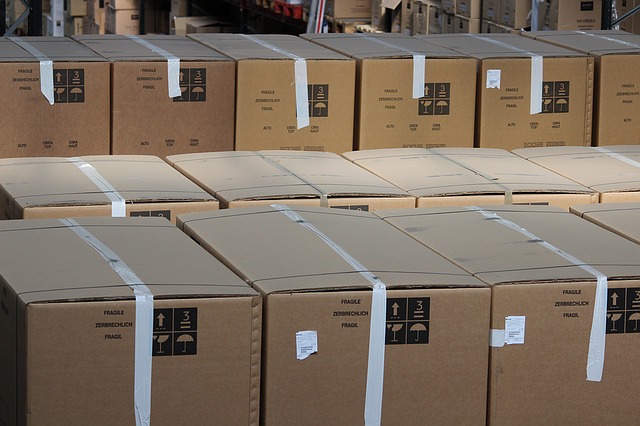
by logisticsplus | Sep 16, 2016 | News
 What is volume LTL shipping? In general industry terms, a volume shipment (sometimes referred to as a partial truckload) typically weighs more than 5,000 pounds, is six (6) pallets or more or it takes up 12 to 32 linear feet of trailer space. As with most consumer or business purchases, buying the things you need in larger quantities is a simple way to save money. So, just as you’d expect to get a better deal on that case of bottled water at your local warehouse store, the same is true for freight. Ship a larger shipment and spend less than shipping multiple, smaller shipments. Unlike standard LTL shipments, where the rates and discounts are already pre-established, volume LTL shipments are generally “spot quoted” and can often help a carrier fill density in a “backhaul” lane where they need the additional business. This will generally result in lower freight charges than what might have been otherwise charged using standard LTL rates.
What is volume LTL shipping? In general industry terms, a volume shipment (sometimes referred to as a partial truckload) typically weighs more than 5,000 pounds, is six (6) pallets or more or it takes up 12 to 32 linear feet of trailer space. As with most consumer or business purchases, buying the things you need in larger quantities is a simple way to save money. So, just as you’d expect to get a better deal on that case of bottled water at your local warehouse store, the same is true for freight. Ship a larger shipment and spend less than shipping multiple, smaller shipments. Unlike standard LTL shipments, where the rates and discounts are already pre-established, volume LTL shipments are generally “spot quoted” and can often help a carrier fill density in a “backhaul” lane where they need the additional business. This will generally result in lower freight charges than what might have been otherwise charged using standard LTL rates.
What information will you need to provide to get a volume LTL shipping rate? Like any standard LTL shipment, you’ll need the origin and destination zip codes, total weight, and freight classification (or a detailed description of your commodity). You’ll also need to provide the pallet count, shipment dimensions, and the date you’re planning on shipping. Quick and competitive access to carriers’ volume LTL rates are one of the many reasons to use an experienced freight management company (like Logistics Plus). They can save you money on your volume LTL shipping because they have ready access to many carriers that will provide the best volume rates, and they often know what type of freight carriers are looking to secure. Keep in mind, because volume quotes are spot-quoted, they are not automatic. They can often take an hour or so to obtain, so plan ahead.
Don’t be shy in requesting volume LTL and partial truckload shipments when you have the opportunity – they can help you save on your overall shipping costs! If you’ve got a shipment over 5,000 pounds or more than six pallet positions, click the button below and let the Logistics Plus North American freight experts go to work finding the best rates for you!

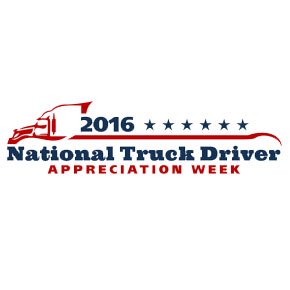
by logisticsplus | Sep 13, 2016 | News
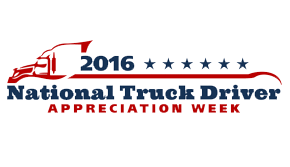 This week is National Truck Driver Appreciation Week (NTDAW) – a time when America honors all professional truck drivers for their hard work and commitment in tackling one of our economy’s most demanding and important jobs.
This week is National Truck Driver Appreciation Week (NTDAW) – a time when America honors all professional truck drivers for their hard work and commitment in tackling one of our economy’s most demanding and important jobs.
Logistics Plus was founded by a truck driver; and so our 400+ employees are especially proud to extend our collective thanks to all truck drivers across America (and around the world, for that matter). These 3.5 million professional men and women not only deliver our goods safely, securely and on time, they also keep our highways safe.
In honor of NTDAW, here are some interesting facts about truck drivers and the trucking industry published by the American Trucking Association (ATA):
- Professional truck drivers drove over 279 billion miles in 2014, more than double 25 years ago. Those miles accounted for 14.2% of all motor vehicle miles and 29.8% of all truck miles.
- The trucking industry paid $39.9 billion in federal and state highway taxes in 2014, and represented 12.1 percent of vehicles on the road. The trucking industry paid $18.4 billion in federal highway-user taxes and $21.6 billion in state highway-user taxes in 2014.
- The trucking industry consumed 54.3 billion gallons of diesel fuel and gasoline in 2015. Based on consumption and price, ATA reported that motor carriers spent $142.9 billion in 2015.
- The federal fuel tax for diesel in 2015 is 24.4 cents per gallon; the average state tax for diesel fuel was 27.4 cents per gallon.
- There are 3.63 million class 8 trucks on the road in the United States and 11.7 million commercial trailers were registered in 2015.
- There are 3.5 million truck drivers in the United States. Total industry employment is 7.3 million or one out of every 16 people working in the United States.
- There are 586,014 for-hire carriers and 747,791 private carriers in the United States; 97.3 percent of them have fewer than 20 trucks and 90.8 are operating six trucks or less.
- In 2015, the trucking industry hauled 10.49 billion tons of freight, or 70.1 percent of total U.S. freight tonnage. Rail was the next busiest mode, moving 13.8 percent of the nation’s freight tonnage.
- In 2015, the trucking industry was an astounding $726.48 billion industry, representing 81.5 percent of the nation’s freight bill.
- More than 80 percent of U.S. communities depend solely on trucking for delivery of their goods and commodities.
- A new truck produces one-tenth the fine particulate emissions and smog-forming NOx emissions as a similar truck manufactured just seven years ago.
- Fine particulate emissions from on-road diesel trucks have been cut by more than half over the past decade.



 Parcel Shipping: Shipments under 150 pounds and shipped in cartons (less than 108 inches long and 67 inches wide), rather than on a pallet, are often moved via Parcel shipping with carriers such as USPS, UPS, FedEx or regional courier services.
Parcel Shipping: Shipments under 150 pounds and shipped in cartons (less than 108 inches long and 67 inches wide), rather than on a pallet, are often moved via Parcel shipping with carriers such as USPS, UPS, FedEx or regional courier services.
 Volume Less-Than-Truckload (LTL) Shipping: Shipments between 5,000 and 10,000 pounds, or taking up more than 6 pallet spaces, are often moved more cost-effectively with a “volume” or “spot” quote. In these situations, the carrier will analyze the weight and dimensions of the shipment and provide a competitive “all-in” rate quote.
Volume Less-Than-Truckload (LTL) Shipping: Shipments between 5,000 and 10,000 pounds, or taking up more than 6 pallet spaces, are often moved more cost-effectively with a “volume” or “spot” quote. In these situations, the carrier will analyze the weight and dimensions of the shipment and provide a competitive “all-in” rate quote.
 Partial Truckload Shipping: Shipments between 10,000 and 20,000 pounds, or taking up more than 10 pallet spaces, are often moved more cost-effectively as a partial truckload. In these situations, the truckload carrier will analyze the weight and dimensions of the shipment and provide a competitive “all-in” rate quote.
Partial Truckload Shipping: Shipments between 10,000 and 20,000 pounds, or taking up more than 10 pallet spaces, are often moved more cost-effectively as a partial truckload. In these situations, the truckload carrier will analyze the weight and dimensions of the shipment and provide a competitive “all-in” rate quote.
 Full Truckload (FTL) Shipping: Shipments over 20,000 pounds are often moved more cost-effectively as a full truckload. In these situations, the carrier will analyze the weight and dimensions of the shipment and provide a competitive “all-in” rate quote.
Full Truckload (FTL) Shipping: Shipments over 20,000 pounds are often moved more cost-effectively as a full truckload. In these situations, the carrier will analyze the weight and dimensions of the shipment and provide a competitive “all-in” rate quote.



 The leaves are turning, temperatures are dropping, and the peak Fall freight shipping season is here once again. Manufacturers are working to ship year-end orders, distributors are managing inventory and fulfilling shipments, and retailers are stocking shelves for the holidays. No matter where your business lies within the supply chain, finding affordable and reliable freight capacity this time of year is critical. To help get you through the season, here are 8 cost-saving freight shipping tips for you to consider:
The leaves are turning, temperatures are dropping, and the peak Fall freight shipping season is here once again. Manufacturers are working to ship year-end orders, distributors are managing inventory and fulfilling shipments, and retailers are stocking shelves for the holidays. No matter where your business lies within the supply chain, finding affordable and reliable freight capacity this time of year is critical. To help get you through the season, here are 8 cost-saving freight shipping tips for you to consider:





